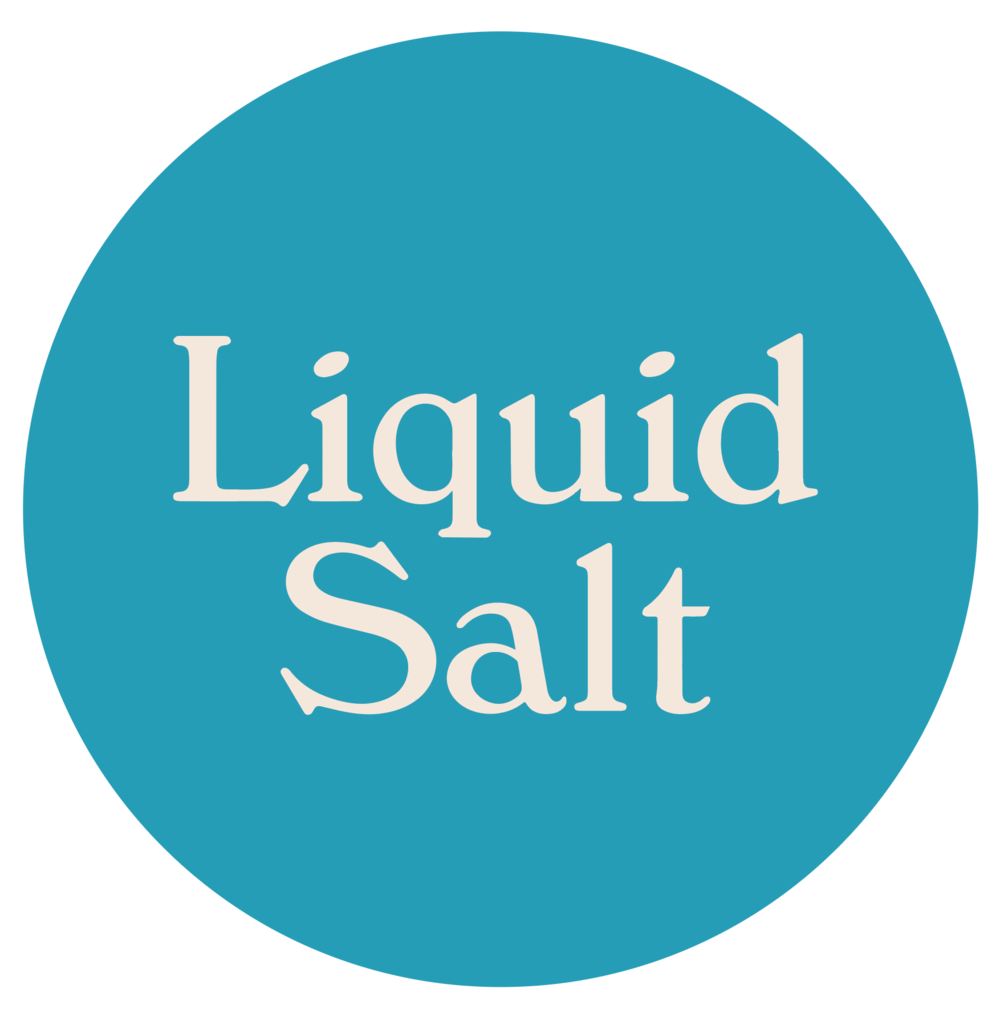Jay Nelson
Interview by Zachary Slobig for Freunde von Freunden
Photography by Kenny Hurtado
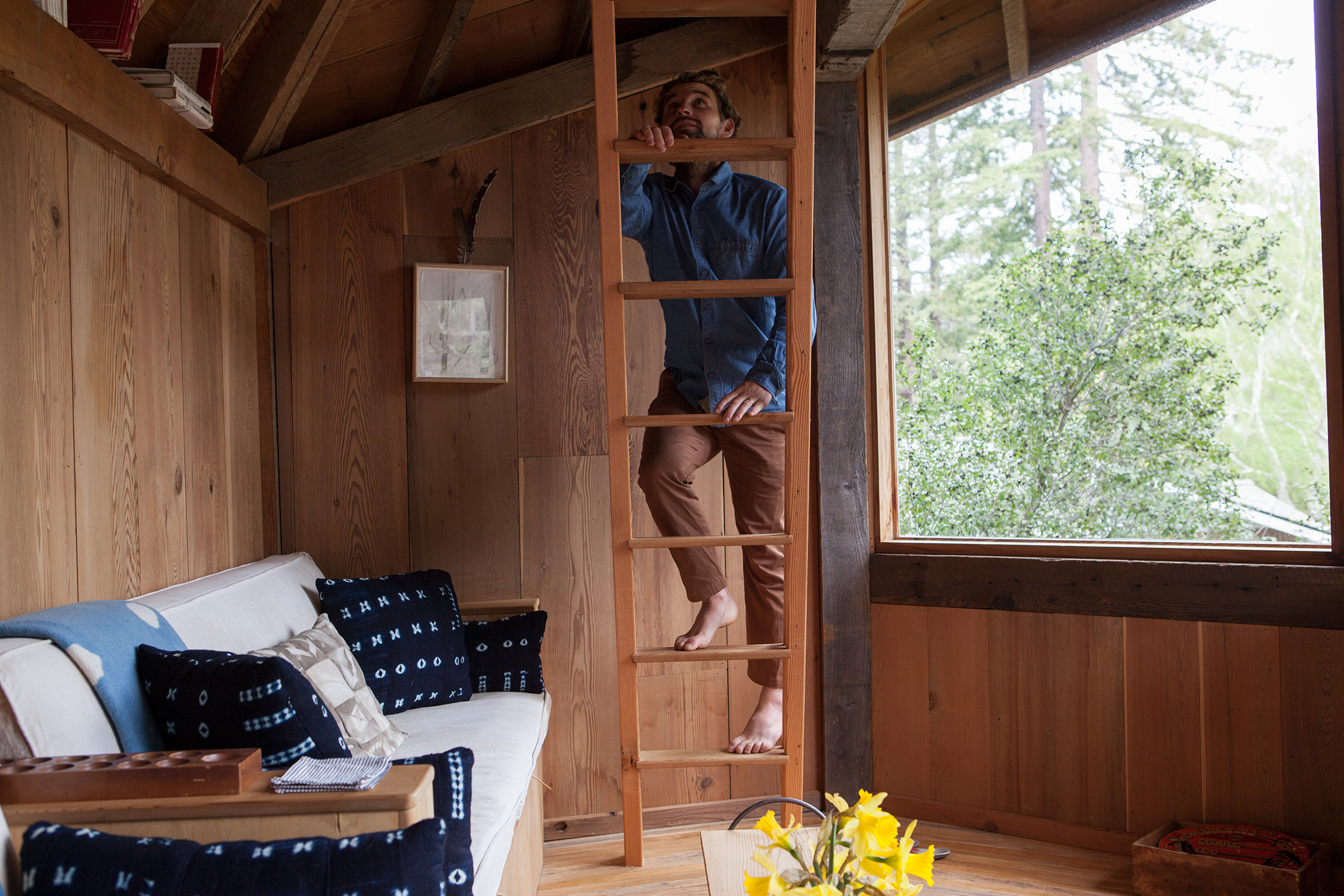
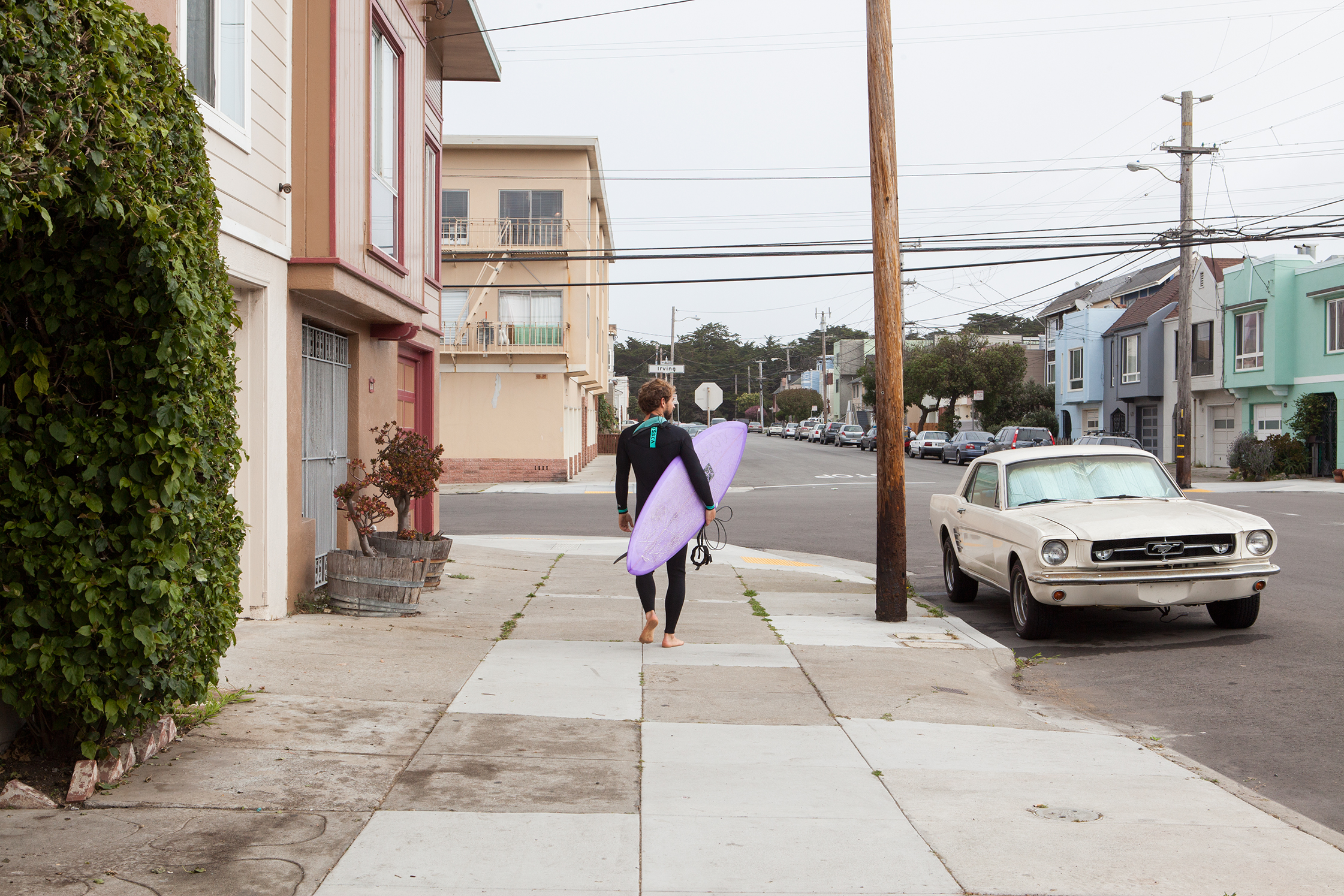
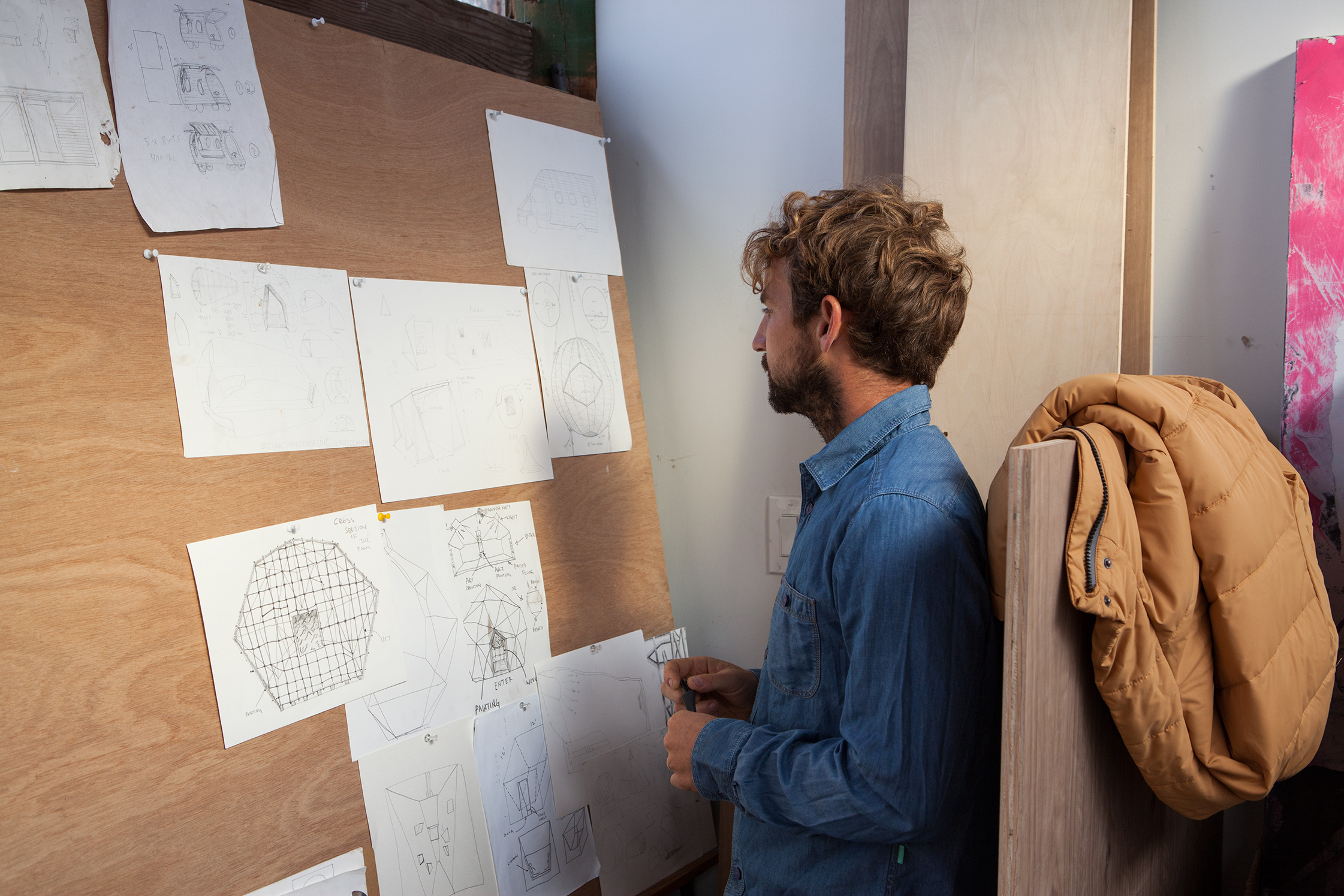
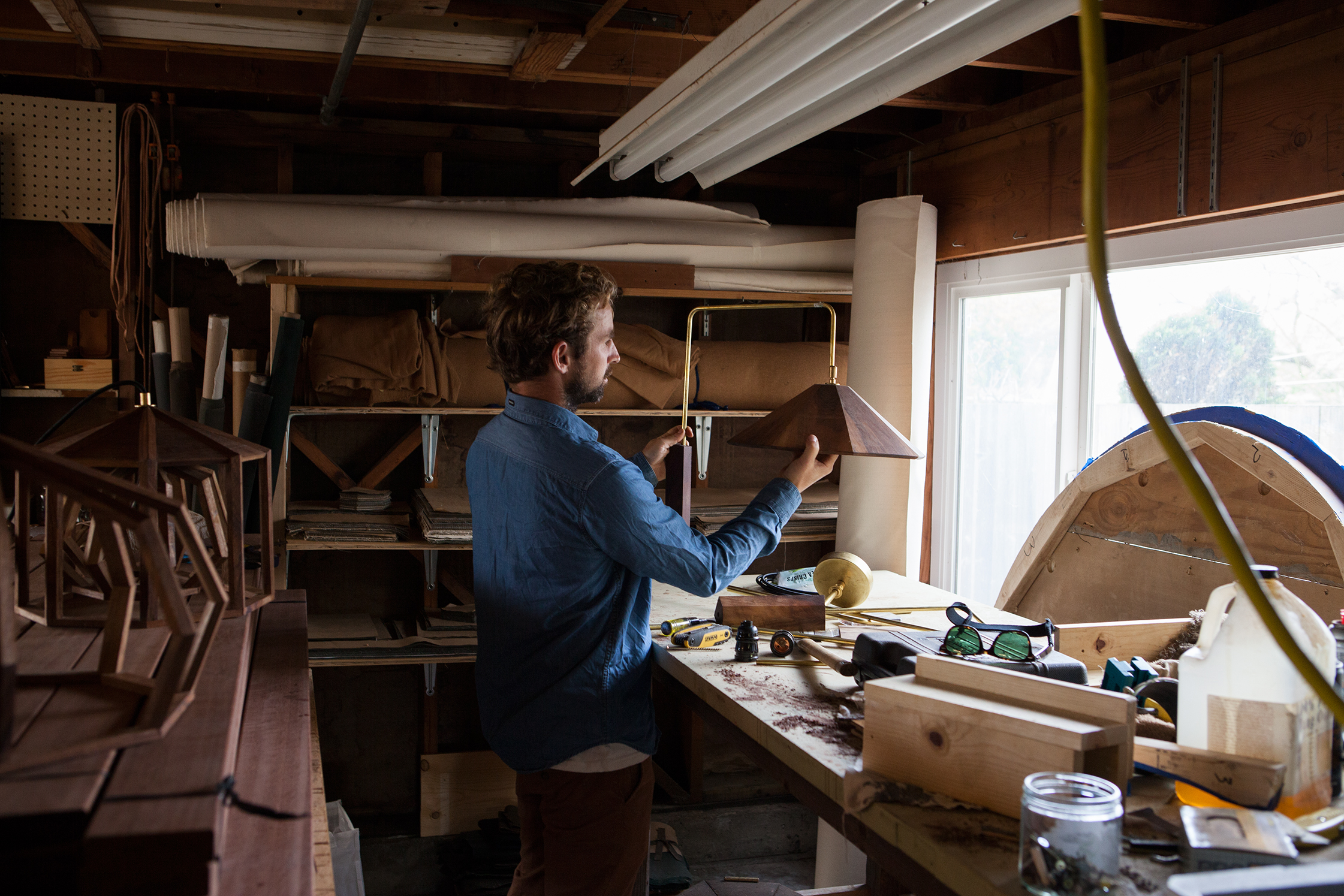
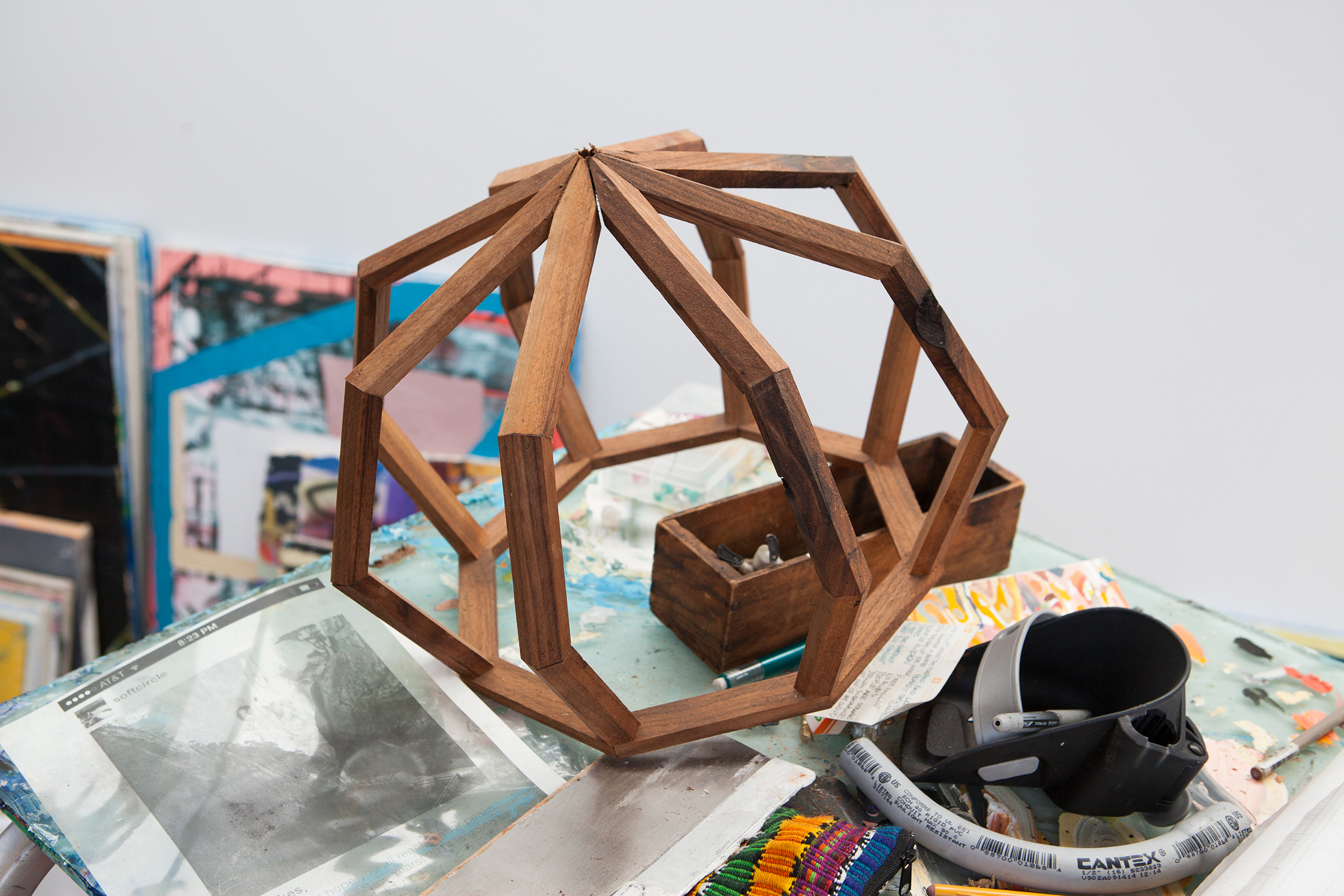
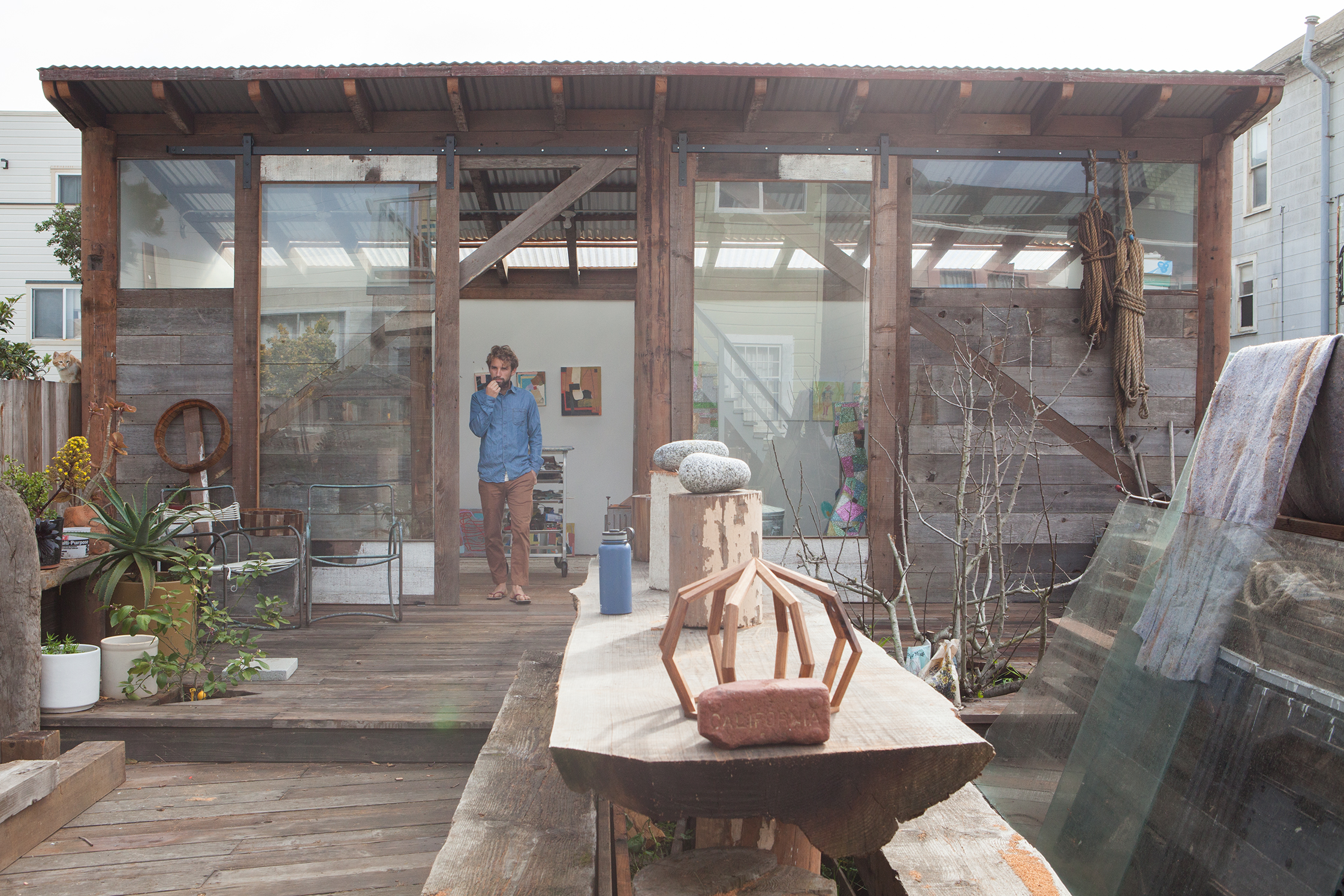
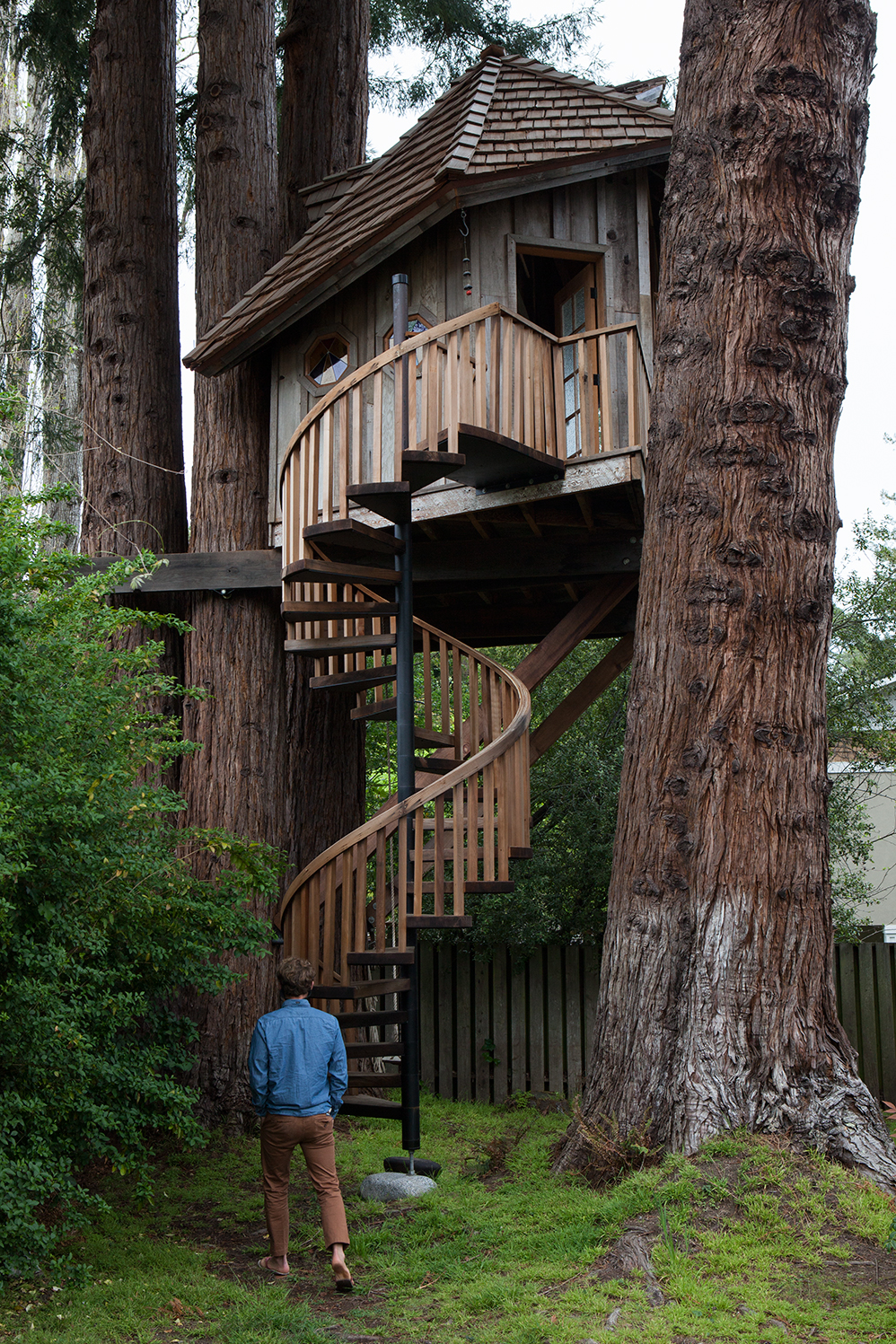
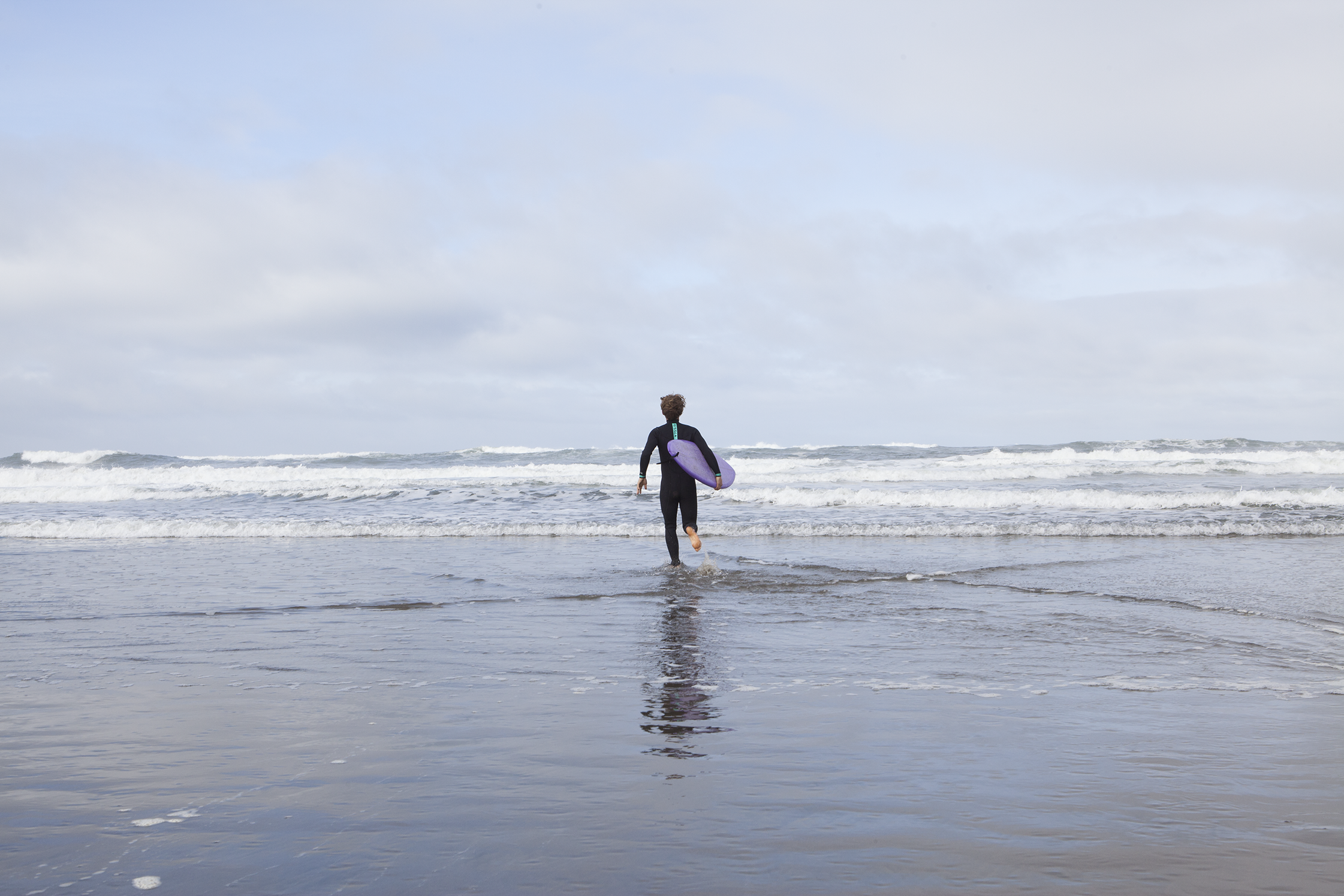
A few blocks from the churning Pacific in San Francisco’s Outer Sunset neighborhood sits the charming duplex built in 1900 where Jay Nelson lives in the lower flat with his wife, the painter Rachel Kaye, and their one-year-old daughter Romy. They bought the building with friends and Jay tore his apartment down to the studs and rebuilt it, mostly by himself. Little details like the porthole window that peeks into the back garden are immediately recognizable as his touch.
It’s out behind the building where you fully step into Jay’s world – through a solarium and dining room addition still in the works. Over to the side sit stacks of reclaimed and scavenged redwood, to the left a shingle-topped outdoor shower that looks like an overgrown birdhouse from a children’s book. A long table and benches of rough-hewn logs sit front and center, potted succulents here and there, and looming over it all, a light-flooded studio he built to share with Rachel.
We sipped coffee and watched the morning go from sun-drenched to foggy with a speed that only seems to happen in this city. We chatted about building with found materials, working as an artist in residence at Facebook, and pondered when surfing may become uncool again.
Let’s start with the simplest question: Why wood? How did you get started working primarily with this material?
Well, let’s see, when I was a kid I used to work a lot with wood. My dad was often remodeling our house, so there was always a lot of scrap lumber lying around. It was simply accessible to me. All through high school I was building stuff with friends and that was kind of a hobby that we all took up – building forts, pulleys, tree houses and skate ramps.
Do you remember the first thing you built?
Yeah, I built a tree house when I was about nine years old. I would nail found pieces of wood on the tree and just keep doing that until there was thick layer of wood on top of everything. Friends would come over and help but it got so crazy and the tree was so mangled that my dad was like, “listen, I’ll buy you all the material to build a skate ramp if you take all that wood out of the tree.” My whole childhood was pretty much working with wood – you tend to gravitate towards the things you know.
I HAD THIS VISION OF THIS WHOLE BED UP TOP THAT COULD
FOLD UP AND YOU’D HAVE A LITTLE SPACE IN THERE TO COOK, DRAW,
READ, WRITE OR DO WHATEVER YOU WANT.
Tell me about your first vehicle customization.
I was living above Mollusk in an attic and a friend’s mom had this old ‘91 Honda CRX whose hatchback had been smashed by a big truck. At first I put a tarp over it and taped it down but when that failed I screwed some Plexiglas to it and had that for a little while. I actually had this book, Some Turtles Have Nice Shells, that was made in the ‘70s about house trucking and they had a section that was about mini house trucks. It was really inspiring to see people living so minimally in these cars and I thought this car was perfect for it. I had this vision of this whole bed up top that could fold up and you’d have a little space in there to cook, draw, read, write or do whatever you want. It seemed like a fun project to see how small of a living space I could create. Now I feel like that’s kind of a normal thing that people think about, but it was exciting because I was making something without knowing how to go about it. I hadn’t really seen anything similar before.
Then you drove it cross-country, right?
This is where the love story comes in. Rachel and I had broken up at the time and she was living in New York. In the winter, I just drove out there, showed up at her door and pretty much moved in with her. Then, in a similar manner, I went to Bard for graduate school and turned up for the summer program with that same car and all my art inside it.
And what did people make of you and this vehicle when you showed up?
I don’t want to say I was ahead of something, but right now there’s so much more excitement about camper cars than when I built my first one. Now, living in a camper or a car is really cool. I guess it was also cool back then but now it’s almost respectable to do that because it’s a thing. My sister lived in a VW van for eight years and now people create entire careers from living in VW vans – they blog about life on the road and the food they cook in their little kitchens. It’s such a thing now, but when I first built my camper, it was like, oh, some crazy person on the road.
Most people thought you were crazy, huh?
Yeah and I was kind of into that, like I was playing it up a little bit. Crazy people are what inspires me, you know? I’ve always been inspired by people who just kind of make do. Like in this case, you have this car and you want a house, and somehow you just figure out how to make it work.
What’s the first thing you made that you were truly proud of?
Probably my first surfboard. I shaped it when I was 16. Jon Wegener was making all my boards at the time. I would constantly go there and watch him shape boards and he would make me do chores, like sweep the floor or paint his old shaping room. He was a real mentor to me. One day he was like, “hey, I got this blank here that was a screw-up. You should make it into a board – I think you’re ready.” It was a piece of junk, but no matter what, the first board you ever shape and ride is going to be magic, there’s just no way around it. When you make it yourself, there’s this incredible relationship with the surfboard and you’re open to the way it rides, you’re patient with it. I mean, that first board was amazing. It was fucking awesome.
When I went to art school, it was so uncool to be a surfer.
I would never tell anybody back then.
How has your connection to the ocean and surfing formed your aesthetics and the things you make?
I definitely love surfing and it’s a huge part of my life, but if you want to dedicate your whole time to it you have to live a life revolving around what the waves are doing. Sometimes that feels like a curse. But it’s a nice rhythm of life and I feel like it sort of happened naturally for me – I became an artist because I was a surfer. They just seemed to fit nicely together. When I went to art school, it was so uncool to be a surfer. I would never tell anybody back then.
Because they wouldn’t take you seriously as an artist?
Yeah, they would be like, oh, surfer dude. Eventually they all figured it out and they would totally make Spicoli jokes. I think surfing becomes cool every 20 years and then it goes through a dark age, at least in pop culture. In the ‘60s, it was incredibly cool, everybody wanted to surf, and then again in the ‘80s probably. It seems like now it’s cool. It’s up again. So I keep wondering if it’s going to go out of fashion at some point. It’s kind of hard to imagine.
Let’s talk about this neighborhood. About a decade ago you were here helping to build Mollusk Surf Shop, then you left and lived in New York for a while before returning to make a home for yourself. What’s changed around here?
The neighborhood’s changed a lot. I feel like it was a lot foggier but I don’t know if that’s just because there are more people and things happening now. It feels sunnier, nicer and happier. As of now I’m never going to leave this house. I really love it here. I lucked out big time.
Yeah, I agree. Not a day goes by that I’m not thankful for living in this neighborhood. It’s such a great place to come home to.
I found my people out here, you know? I really believe that the friends I have here are my lifelong friends. This is my community and I’m not planning on leaving.
There’s a strong element of improvisation in your work which probably makes it difficult to talk about because it could very well change.
That’s true. I’m also a painter and painting is what taught me that. Maybe also building the tree houses. But, yeah, that’s a very strong thing in my work and it’s more than just improvisation. I don’t know where things are going and I have to constantly ask myself, Is this good? Do I like this? Is this interesting? I like to just see where it takes me and go along for the ride. I take the same approach with building. For example, this studio that I built, I got a few poles randomly from a friend and they’ve determined the shape of the whole thing. I’ve slowly gathered materials that inform the structure’s appearance. Every single piece of wood, I know its story and exactly where it came from.
How much painting are you doing these days?
I’m doing a lot of painting. I wish I could just be a painter sometimes. All the building projects is kind of how I’ve made my money. I’ve never really been able to make money as a painter, but I also really value that because then it’s just mine. Painting is tough – a lot of people don’t really get it.
You think people understand your structures and vehicles better?
Totally. These are things that people need and use every day – architecture and cars – it’s just so easy. Anyone can get it.
When you’re painting and really need to be productive, are you an early riser or a night owl? What’s your routine?
I only work for about an hour at night and I don’t even work every night, but an hour is a lot. If you worked an hour every day on something, you’d have an insane amount of work in a year, or two years, or ten years. The paintings I make now, I make them really fast and I’m into that. I like how they are disposable and I just make ‘em, make ‘em, make ‘em. Some of them are just total shit, some are okay and some are bad but later I might decide they’re good.
This interview originally appeared in Freunde von Freunden. FvF is an independent and international publication documenting inspiring people from diverse creative and cultural backgrounds. Our content aspires to present multifaceted personal perspectives that offer impressions of cities, various artistic industries and international urban living. By introducing real people and stories from around the world with an honest and authentic approach, FvF attracts a global readership and remains borderless.
